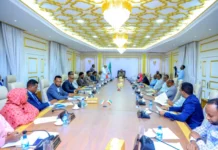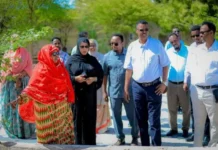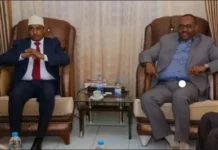Somaliland agriculture in sector is ranked in importance among the productive sectors after the livestock sector with 20 to 25 % of the population depending directly on the sector for their livelihood. Despite many constraints such as unfavorable climatic conditions, inadequate investment capital, inadequate technical capacity, lack of post-harvest technology, inadequate institutional capacity, inadequate agriculture Research and extension, and poor rural infrastructure, the sector has substantial untapped potential that needs to be harnessed.
Somaliland consists of 10 agro-ecological zones of which eight are arid or desert with significant limitation to agricultural production. The total arable land of the country is estimated to be around 350,000 hectares and is concentrated largely on the North-western plateau – Southern Awadal, Gabiley and Maaroodijeex.
Crop production in Somaliland is constrained by a multitude of interacting socioeconomic, biophysical, and technical factors, of which water scarcity is the most important biophysical factor.
Climate related stresses, particularly amount of rainfall precipitations and distribution impact on crop production and productivity. Figures on food imports suggest that crop production and food aid assistance provided by the international community are not keeping up with the domestic demand for food items.
Droughts are the main obstacle for agriculture in Somaliland; however, there are other contributing factors to the poor agricultural performance in the country, such as:
- Lack of enabling environment for Agricultural development
- Lack of research and extension
- Inadequate sustainable water shed management
- Decreased productivity and outputs in agriculture sector
- Wide spread pest and diseases in the country
- Huge post-harvest losses
- Promote microfinance and microcredit schemes for farmers
- Limited formal technical Vocational and Educational training (TVET) and farmer field schools
- Promote both local and foreign investment interventions on agricultural production
- Lack of knowledge for potential and utilized national arable land
- Inadequate information collection system
- Lack of research and extension services
- Poor land use techniques leading to degradation of agricultural land;
- Inadequate farm machinery equipment
- Inadequate support service such input support and credits services;
- Inadequate agricultural infrastructure such as irrigation and feeder roads for production.
- Lack of leadership for innovation agriculture
However, I recommend the following to be adopted by the concerned department to achieve tangible results in the agriculture sector:
- Promotion of increased agricultural production
- Ensuring the country’s food security
- Create conducive environment for agricultural production and provide subsidized farm implements
- Promote both local and foreign investment interventions on agricultural production
- Map potential and utilized national arable land
- Promote microfinance and microcredit schemes for farmers
- Formulation, implementation and monitoring of agricultural legislations, regulations and policies.
- Infrastructure, marketing, trade and investment development.
- Technical institutional and human resource development.
- Sustainable Watershed Management
- Manage and control pests and diseases in crops
- Ensure availability and sustainability management of water for all.
- Promote appropriate technologies and practices for minimizing post-harvest losses along the entire commodity value chain
- Supporting agricultural research and promoting technology delivery;
- Facilitation and representation of agricultural state Cooperatives in the government;
- Development, implementation and co-ordination of programmes in the agricultural sector
- Regulation and quality control of inputs, produce and products in the agricultural sector;
- Management and control of trans-boundary pests, diseases and invasive species;
- Documentation and registration of agricultural land
- Collection, maintenance and management of information on agriculture sector; and Promotion of sustainable resource management and utilization.
Therefore, Somaliland Government should rethink its policy on food security and find ways and means to resolve the issue given the above mentioned. I think part of the solution lies with the leadership qualities, we need to pool our resources, both human and financial. Then, we can realize the above mentioned.
Thanks
Abdirahman Ibrahim Abdilahi
Abdirahman270@gmail.com






































